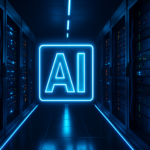As the digital landscape continues to evolve rapidly, Google (NASDAQ:GOOGL) I/O has once again unveiled a series of technological advancements that are poised to reshape the user experience. Held each spring, this influential developer conference offers a glimpse into the cutting-edge tools Google is bringing into various sectors, from artificial intelligence to immersive technologies. In 2025, the conference predominantly focused on AI, introducing multifaceted integrations that aim to bring a more seamless and intuitive future into view. The announcements at this year’s event highlight the tech giant’s ongoing commitment to enhancing digital interactions globally.
Looking back, Google I/O events have consistently showcased remarkable developments across its ecosystem. Trends demonstrate a growing emphasis on AI, but the 2025 edition took the stakes higher than ever. Past introductions like Google Assistant and AI-driven Google Lens set a foundational tone for incremental yet substantial innovation. However, the 2025 conference clearly prioritizes deeper integration of AI across products, showcasing Google’s evolving strategy in fulfilling user demands from tech-savvy to ordinary. The clear trajectory shows an escalating focus on personalized and highly interactive digital experiences.
What New Features Make Gemini 2.5 Stand Out?
Gemini, Google’s AI assistant, now features version 2.5, integrating smarter reasoning capabilities and more human-like interactions. The introduction of the “Deep Think” feature allows for a comprehensive evaluation of hypotheses before giving responses, aiding in the resolution of complex questions. Additionally, “Flash” provides timely and precise responses to everyday inquiries. Enhanced integration into the user’s cameras and screens enriches real-time support, enabling actions such as object recognition for immediate assistance. This incorporation extends practical utility into Google’s platforms like Maps and Calendar, broadening overall user experience.
How Do Google AI Subscriptions Cater Differently to Consumers?
To address various consumer needs, Google has launched two subscription plans: Google AI Pro, priced at $19.99 per month, and Google AI Ultra at $249.99. The Pro plan offers extended features within the Gemini application and early access to features in Chrome. Meanwhile, the Ultra plan targets enterprises by offering advanced tools like Veo 3 for high-quality video generation and Imagen 4 for detailed image creation. Notably, these plans provide increased usage limits and access to future innovations, beneficial for users and organizations heavily reliant on AI technology.
With its updated AI image and video generation tools, Imagen 4 and Veo 3 offer notable advancements in creative digital media. Imagen 4 is adept at generating high-resolution images up to 2K, optimizing the process of creating visuals from mere text. Concurrently, Veo 3 provides video designers the ability to construct highly detailed video clips effortlessly. These features integrated into Google’s AI filmmaking platform, Flow, assist creators in conjuring cinematic imagery through natural language processing, refining visionary outputs.
The new Android XR, part of Google’s enhanced extendable reality strategy, leverages smart glasses integrating cameras, microphones, and speakers for a superior hands-free experience. Partnering with major players like Samsung and Qualcomm, Google aims for interactions to be intuitive and dynamic, aligning with smart glasses designed by brands such as Gentle Monster and Warby Parker. These glasses allow immersive experiences with a private in-lens display, providing in-field information that is timely and contextualized, transforming how digital content is consumed.
Additionally, Google modifies the traditional searching mechanism with AI Mode, transforming it into an engaging, dialogue-driven experience. This enhancement uses the Gemini chatbot for tailored search results and more nuanced dialogue-driven interactions. Furthermore, Google Beam, a rebranding of Project Starline, integrates 3D video calling, making remote communication more lifelike. Such developments show Google’s continuous effort to integrate AI technologies across their ecosystem for more personalized user interactivity.
These advancements underline a significant progression in how Google integrates AI across its services, redefining digital engagements for users worldwide. With such a wide array of tools, ranging from personalized digital environments to innovations in communication technologies, the conference exemplifies Google’s direction. Importantly, the strategic focus on AI reflects broader industry trends seeking to refine and personalize the user experience through intelligent technology integration.










